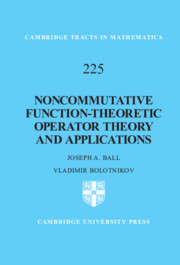This paper is a continuation of  $[6]$ . We consider the model subspaces
$[6]$ . We consider the model subspaces  ${{K}_{\Theta }}={{H}^{2}}\ominus \Theta {{H}^{2}}$ of the Hardy space
${{K}_{\Theta }}={{H}^{2}}\ominus \Theta {{H}^{2}}$ of the Hardy space  ${{H}^{2}}$ generated by an inner function
${{H}^{2}}$ generated by an inner function  $\Theta $ in the upper half plane. Our main object is the class of admissible majorants for
$\Theta $ in the upper half plane. Our main object is the class of admissible majorants for  ${{K}_{\Theta }}$ , denoted by Adm
${{K}_{\Theta }}$ , denoted by Adm  $\Theta $ and consisting of all functions
$\Theta $ and consisting of all functions  $\omega $ defined on
$\omega $ defined on  $\mathbb{R}$ such that there exists an
$\mathbb{R}$ such that there exists an  $f\ne 0,f\in {{K}_{\Theta }}$ satisfying
$f\ne 0,f\in {{K}_{\Theta }}$ satisfying  $|f\left( x \right)|\,\le \,\omega \left( x \right)$ almost everywhere on
$|f\left( x \right)|\,\le \,\omega \left( x \right)$ almost everywhere on  $\mathbb{R}$ . Firstly, using some simple Hilbert transform techniques, we obtain a general multiplier theorem applicable to any
$\mathbb{R}$ . Firstly, using some simple Hilbert transform techniques, we obtain a general multiplier theorem applicable to any  ${{K}_{\Theta }}$ generated by a meromorphic inner function. In contrast with
${{K}_{\Theta }}$ generated by a meromorphic inner function. In contrast with  $[6]$ , we consider the generating functions
$[6]$ , we consider the generating functions  $\Theta $ such that the unit vector
$\Theta $ such that the unit vector  $\Theta \left( x \right)$ winds up fast as
$\Theta \left( x \right)$ winds up fast as  $x$ grows from
$x$ grows from  $-\infty \,\text{to}\,\infty $ . In particular, we consider
$-\infty \,\text{to}\,\infty $ . In particular, we consider  $\Theta \,=\,B$ where
$\Theta \,=\,B$ where  $B$ is a Blaschke product with “horizontal” zeros, i.e., almost uniformly distributed in a strip parallel to and separated from
$B$ is a Blaschke product with “horizontal” zeros, i.e., almost uniformly distributed in a strip parallel to and separated from  $\mathbb{R}$ . It is shown, among other things, that for any such
$\mathbb{R}$ . It is shown, among other things, that for any such  $B$ , any even
$B$ , any even  $\omega $ decreasing on
$\omega $ decreasing on  $\left( 0,\,\infty\right)$ with a finite logarithmic integral is in Adm
$\left( 0,\,\infty\right)$ with a finite logarithmic integral is in Adm  $B$ (unlike the “vertical” case treated in
$B$ (unlike the “vertical” case treated in  $[6]$ ), thus generalizing (with a new proof) a classical result related to Adm
$[6]$ ), thus generalizing (with a new proof) a classical result related to Adm  $\exp \left( i\sigma z \right),\,\sigma \,>\,0$ . Some oscillating
$\exp \left( i\sigma z \right),\,\sigma \,>\,0$ . Some oscillating  $\omega $ 's in Adm
$\omega $ 's in Adm  $B$ are also described. Our theme is related to the Beurling-Malliavin multiplier theorem devoted to Adm
$B$ are also described. Our theme is related to the Beurling-Malliavin multiplier theorem devoted to Adm  $\exp \left( i\sigma z \right),\,\sigma \,>\,0$ , and to de Branges’ space
$\exp \left( i\sigma z \right),\,\sigma \,>\,0$ , and to de Branges’ space  $H\left( E \right)$ .
$H\left( E \right)$ .










 belongs to
belongs to 
 is the Green function of
is the Green function of  . Moreover, it is proved that, if 0<
. Moreover, it is proved that, if 0< for some (equivalently for all)
for some (equivalently for all)  .
.




























 on the torus spanned by the
on the torus spanned by the 